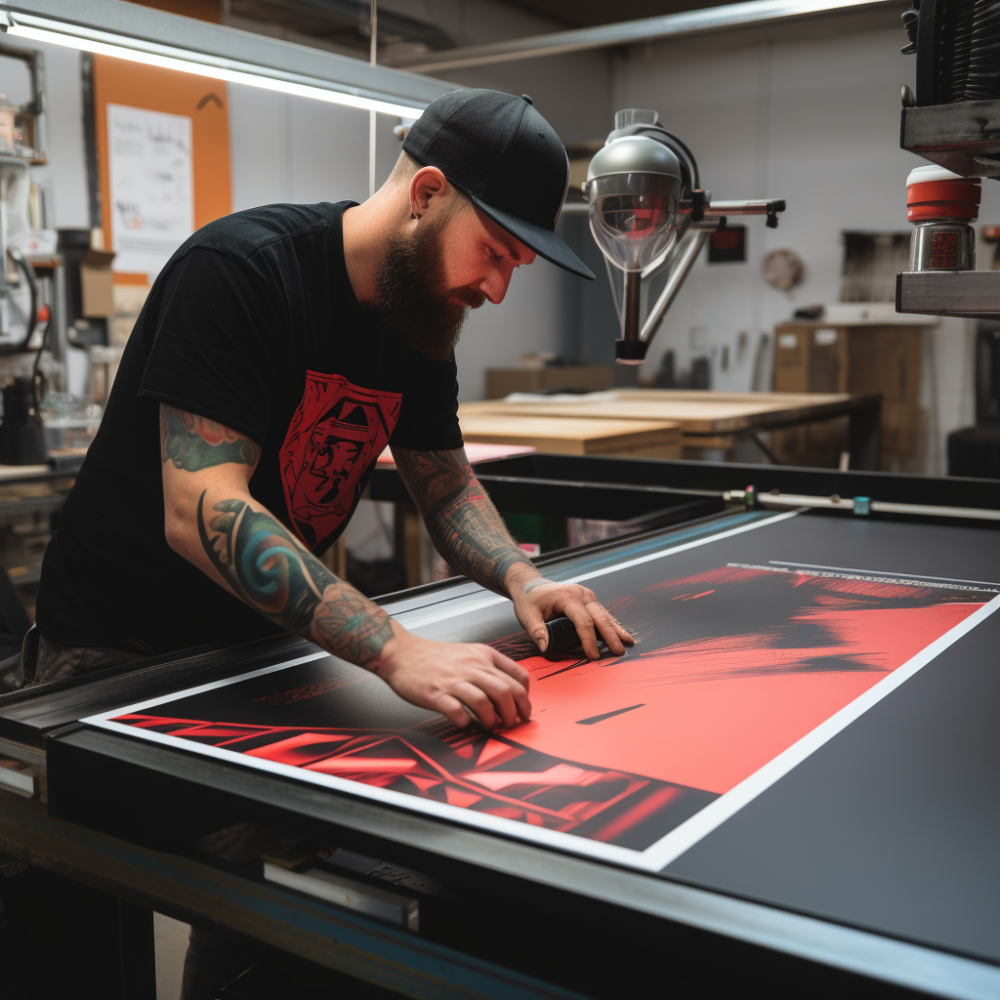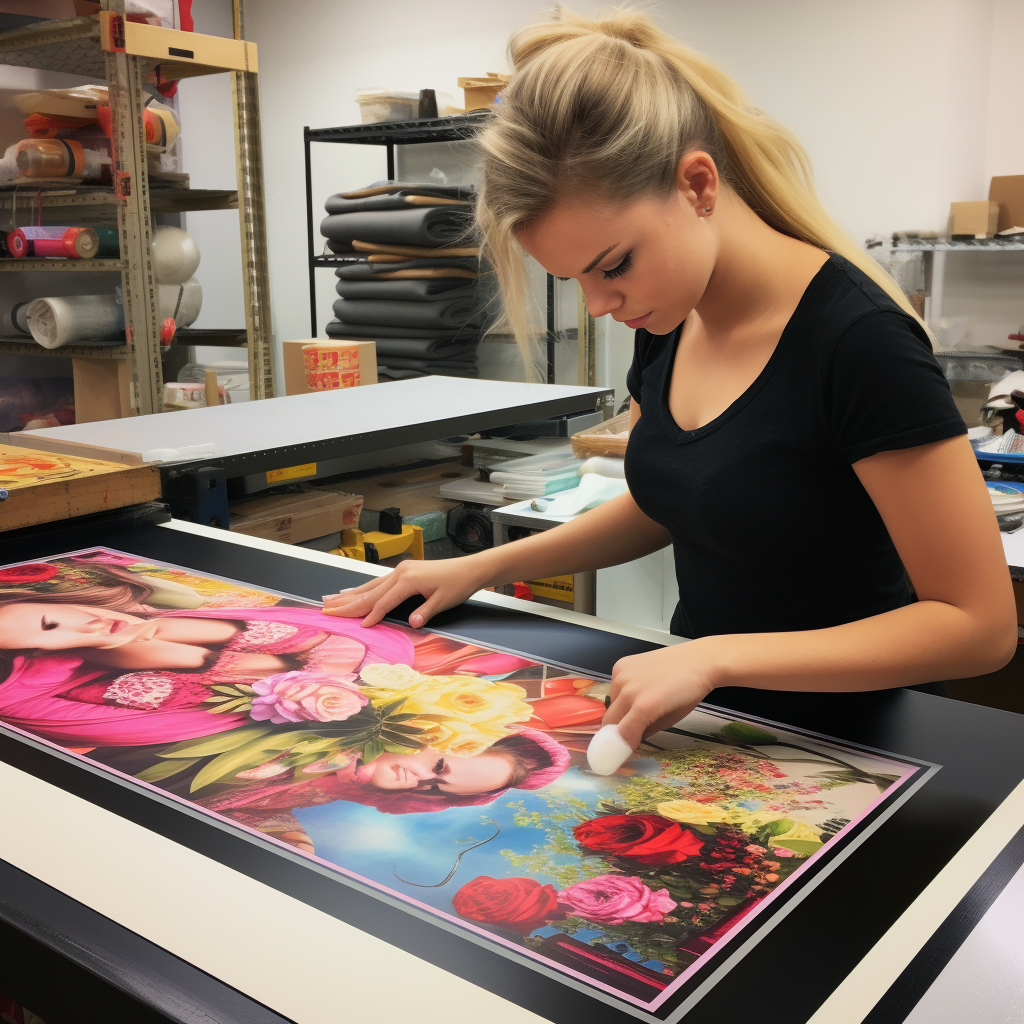
Welcome to the vibrant world of custom flag printing, where creativity meets practicality, and branding comes alive. As a crucial aspect of visual marketing, custom flags offer a dynamic way to represent your brand, promote events, and capture the attention of potential customers. With the right techniques, you can produce flags that are not only eye-catching but also durable and cost-effective. In this section, we will delve into the foundational knowledge required to print custom flags with a professional touch.
If you’re ready to elevate your event marketing and create flags that stand out, send a message to info@zodiacdisplays.com to begin your journey. We’ll guide you through selecting the right materials, inks, and printing methods that align with your marketing objectives and design aspirations. Whether for a trade show, outdoor festival, or storefront display, custom flags can significantly enhance your presence and audience engagement.
Choosing the Right Material for Your Flags

The journey of how to print custom flags begins with selecting the appropriate fabric, which serves as the canvas for your brand’s message. The choice of material can significantly influence the flag’s appearance, longevity, and overall effectiveness in various environmental conditions. Popular materials include polyester, nylon, and cotton, each offering distinct advantages.
- Polyester is renowned for its durability, vibrant color reproduction, and resistance to outdoor elements, making it an ideal choice for flags intended for long-term use.
- Nylon, with its lightweight and quick-drying properties, is perfect for creating flags that flutter gracefully in the breeze, ensuring maximum visibility.
- Cotton provides a traditional look with a softer feel but may require more maintenance and is better suited for indoor or ceremonial use.
It’s crucial to consider the flag’s purpose, the expected weather conditions, and the desired visual effect when choosing your material. A heavier fabric may be necessary for a flag that needs to withstand high winds, while a lighter fabric may be more suitable for indoor events. Regardless of your choice, ensuring the material allows for sharp, high-quality printing is essential to making a lasting impression.
Designing Your Flag: Best Practices and Tips
Once the right material is selected, the focus shifts to the design aspect of how to print custom flags. A compelling design is critical in capturing attention and conveying your message effectively. To ensure your flag’s design is both impactful and professional, here are several best practices and tips:
- Keep it simple: A clutter-free design with a clear focal point will be more readable, especially from a distance. Use bold colors and simple shapes or images to create a strong visual impact.
- Use high-contrast colors: This ensures that your flag’s content stands out. Contrasting colors can help make your flag more legible and draw the eye to key elements.
- Consider scale and proportion: Your flag’s design will be viewed from various distances and angles. Make sure text and logos are large enough to be seen from afar but proportionate to the flag’s size.
- Factor in bleed and seams: During the printing process, allow for extra space around the edges of your design (bleed) to ensure no important elements are lost in the seam or hem.
- Optimize for movement: Flags are dynamic displays; design with movement in mind. Patterns or stripes can accentuate the flag’s motion, while too much text might become unreadable when fluttering.
Remember, a well-designed flag serves as a silent ambassador for your brand or cause. It’s worth investing the time to create a visually appealing and strategically sound design that resonates with your intended audience and enhances your brand’s presence at any event.
The Printing Process: Techniques and Technologies

The journey from a well-crafted design to a vibrant, tangible flag involves a meticulous printing process that leverages various techniques and technologies. Understanding these methods is essential for producing high-quality custom flags that stand the test of time and the elements:
- Dye Sublimation: This technique is widely preferred for its ability to produce rich, color-saturated prints that are long-lasting. The process involves turning a solid dye into a gas without passing through a liquid phase, allowing it to permeate the fabric and solidify into its fibers. The result is a colorfast, washable, and durable print.
- Screen Printing: For large orders with less complexity in color variance, screen printing is a cost-effective option. It uses stencils and ink to press designs onto the fabric, making it suitable for flags with bold, solid colors and fewer details.
- Digital Printing: Ideal for complex designs with multiple colors, digital printing offers precise and detailed image reproduction. It’s a more flexible method that allows for small batch prints and on-demand production with quick turnaround times.
Each printing technology has its own set of advantages, and the choice often depends on the specifics of the project, such as quantity, color complexity, and durability requirements. By selecting the appropriate printing technique, you can ensure that your custom flag is not only visually striking but also cost-efficient and fit for its intended use.
Finishing Touches: Hemming and Grommets

After the printing stage, custom flags undergo a series of finishing touches that not only enhance their appearance but also contribute to their functionality and longevity. Two critical aspects of this stage are hemming and the addition of grommets:
- Hemming: A well-hemmed flag will have a clean edge that resists fraying and tearing. Hemming involves folding the edges of the fabric and sewing them down to create a neat, reinforced border. This is a vital step in ensuring that the flag can withstand windy conditions, providing durability and a professional finish.
- Grommets: Grommets are small metal rings that are inserted into holes along the edge of the flag, usually on the hoist side. They serve as secure anchor points for mounting the flag onto a pole or hanging system. Without proper grommets, a flag may suffer from wear and tear at the points of attachment, leading to premature damage.
The attention to these finishing details is what sets apart a professionally made flag from a makeshift one. Hemming and grommets may seem like minor additions, but they are essential for ensuring that your custom flag is presentable, sturdy, and ready for display in any setting, from corporate events to outdoor festivals.
Caring for Your Custom Printed Flags

Send message to info@zodiacdisplays.com to amplify your event marketing with custom printed flags that are designed to last. But even the highest quality flags require proper care to maintain their vibrant colors and structural integrity over time. Here are some tips on how to keep your custom flags looking their best:
- Cleaning: Regularly clean your flags to remove dirt and debris. Gentle washing with mild detergent and cold water is recommended to avoid color fading. Allow flags to air dry thoroughly before storing to prevent mildew.
- Storage: When not in display, store your flags in a cool, dry place. Fold them neatly or roll them to avoid creases and wrinkles that can permanently affect the fabric.
- Inspection: Periodically check your flags for any signs of wear and tear. Early detection of minor damage can allow for repairs before issues become more significant.
- Avoid Harsh Weather: While many custom flags are designed to be durable, prolonged exposure to harsh weather conditions such as strong winds, heavy rain, or extreme sunlight can shorten their lifespan. Whenever possible, take flags down during severe weather.
By following these care instructions, you can ensure that your custom printed flags remain a striking part of your promotional arsenal for many events to come. Proper flag care is not only about maintenance, it’s about presenting your brand in the best light at every opportunity.









